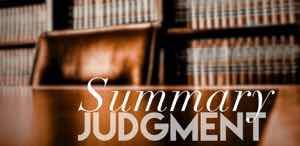Direct Financial Benefit
See also: Judge Denies Axanar Its Fair Use Defense

Under U.S. law, a defendant in a copyright infringement case can incur secondary liability, or indirect infringement, when that party materially contributes to, facilitates, induces, or is otherwise responsible for directly infringing acts carried out by another party.
Proving such acts, known as vicarious copyright infringement, requires the defendant to have received a direct financial benefit from the infringing activity.
In January 2017, a federal judge made a ruling in response to both sides’ requests for summary judgment. While he denied the summary judgment he did rule on the counts of contributory and vicarious copyright infringement.
« Peters’ substantial involvement in, such as writing script for, the Axanar Works materially contributes to the infringing conduct of Axanar Productions. … Peters also profited directly from the Axanar Works. » — Judge R. Gary Klausner
Vicarious Copyright Infringement
Unlike trademark law, which is codified in U.S. statutes, secondary liability rules in copyright matters have solely been a product of case law; courts, rather than Congress, have been the primary developers of theories and policies concerning secondary liability.
The copyright infringement lawsuit brought by CBS and Paramount Pictures against producer Alec Peters and his company, Axanar Productions, alleges the defendants engaged in vicarious copyright infringement, and that they accrued a direct financial benefit from having done so.1)
Vicarious copyright infringement requires a direct financial benefit from the infringement and the right and ability to supervise the infringing activity. Originally, the “direct financial benefit” element was interpreted to apply to financial benefits in proportion to the infringing activity, such as a royalty or commission “directly” related to the infringement. See, e.g., Shapiro, Bernstein & Co. v. H. L. Green Co., 316 F.2d 304 (2d Cir. 1963). Over time, however, the concept of “direct financial benefit” has been stretched to cover situations in which the financial benefit from the infringement was neither any immediate revenue nor any value correlated with the infringing activity itself. Thus, in Napster, “direct” financial benefit was found where the availability of infringing matter was said to act as a “draw” for web site users and where “Napster’s future revenue is directly dependent upon ‘increases in userbase.’” Napster, 239 F.3d at 1023.
Many attorneys believed, hitherto, that the Napster extension of “direct” financial benefit would be limited to circumstances in which the value of the entire enterprise, essentially, was tied to infringement, even if no revenues flowed directly from the infringement. That limiting reading was rejected by the Ninth Circuit in Ellison v. AOL. Though the plaintiff still must show that the infringing activity “constitutes a draw for [an online service’s] subscribers, not just an added benefit,” the extent of the draw need not be “substantial” for direct financial benefit to be found.2)
Peters Personally Profited
In his January 4, 2017, preliminary ruling Federal Judge R. Gary Klausner found that Peters indeed personally profited from Axanar, and that if the jury ultimately found Axanar and Star Trek are substantially similar in total concept, Peters would be liable for personally contributing to copyright infringement and vicariously infringing by personally profiting. The judge found:
Peters’ substantial involvement in, such as writing script for, the Axanar Works materially contributes to the infringing conduct of Axanar Productions. … As to vicarious infringement, Peters, as the president of Axanar Productions, was in charge of and was responsible for its conducts. He was responsible for many of the artistic decisions. He supervised and controlled Axanar Productions. Peters also profited directly from the Axanar Works.3) [citations omitted]
Keywords


